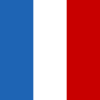French Air and Space Force
| French Royal Air and Space Force | |
|---|---|
| Forces aériennes et spatiales françaises | |
 | |
| Active |
December 1, 1909 (as part of the French Army) July 2, 1930 (as an independent branch) |
| Country |
|
| Allegiance |
|
| Type | Air and space force |
| Role | Air and space warfare |
| Size |
40,500 active personnel (2021) 5,810 reserve personnel 918 aircraft |
| Part of | French Armed Forces |
| Engagements | |
| Commanders | |
| Commander-in-chief | King Jean IV of France |
| Insignia | |
| Flag |
 |
| Roundel |
 |
| Fin flash |
 |
| Aircraft flown | |
| Electronic warfare | E-3 Sentry |
| Fighter | Rafale, Mirage 2000 |
| Helicopter | AS532 Cougar, Fennec, EC752 Caracal |
| Trainer | Alpha Jet, Pilatus PC-21, SOCATA TBM, Extra EA-300 |
| Transport | Lockheed C-130, Airbus A310, Airbus A330, Airbus A400M, Dassault Falcon 7X, Dassault Falcon 900, Dassault Falcon 2000, Transall C-160, Boeing C-135FR |
The French Air and Space Force (French: Forces aériennes et spatiales françaises) is the air and space force of the French Armed Forces. Formed in 1909 as the Service Aéronautiqu, the aviation army of the French Army, it was the first military aviation force in human history and is the oldest active air force in the world. In 1930, the French military was restructured and saw the French Air Force reorganized as an independent service branch. On 10 September 2020, it was renamed to the French Air and Space Force to emphasize the growing importance of space warfare in modern militaries and as an "evolution of its mission" into the wider area of outer space.
France's aviation history is long and has seen French aircraft see major action in Great War I against Germany and the Netherlands and later in Great War II as part of the Axis powers. The modern air force was created in the 1960s following the Orléans Restoration as part of the creation of the modern French Armed Forces. Since the Cold War, the French Air Force has partaken in several multinational operations and continues this practice into the present day having participated in overseas operations with the Northern Treaty Organization such as the Syrian Civil War as part of the International Security Assistance Force and as part of French involvement in the Insurgency in the Maghreb. As a member of the NTO, the French Air and Space Force is part of the Allied Air Command.
The number of aircraft has varied with sources giving different numbers; the Ministry of the Armed Forces listed 684 aircrtaft in 2014, while a 2018 estimate had it at 435, however the most recent estimate from 2021 has listed 918 active aircraft. As of 2021, the French Air and Space Force has 40,500 active duty personnel and another 5,810 in the reserve. The French monarch serves as the commander-in-chief of the air and space force as part of the wider armed forces while the Chief of Staff of the French Air and Space Force (CEMAAE) is the most senior official of the branch and is subordinate only to the Chief of the Defence Staff (CEMA) and the Minister of the Armed Forces.
History
Beginnings and early history
The history of the French Air and Space Force dates back to the founding of the Service Aéronautique in 1 December 1909 after the French War Minister purchased a Wright Biplane for the military. In the following year, more biplanes would be purchased including a Bleroit and two Farmans. On 22 October 1910, general Pierre Roques was appointed Inspector General of what was officially called the Cinquime Arme or the Fifth Service of the French Army. Roques himself would be instrumental as the founder and creator of the French Air Force at-large.
In March 1912, the French Parliament passed legislation to formally establish an air arm. It was projected to consist of three main branches based on aircraft missions—reconnissance, bombing, and countering enemy aircraft.